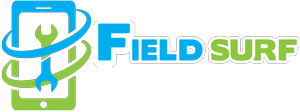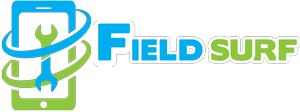So, What Makes a Good Home Service Business Blog?
If you’ve been following our series on how to grow your home service business and have been following up, by now you have a working, dynamic website, you know how to create good content, and you know how to promote your content using social media. So let’s dive into the home service business blog.
The most important part of content marketing for your home service business is your home service business blog. Google takes blogs seriously. A good blog post shows that you know what you’re talking about. Posting good blogs will get you noticed. And posting blogs often shows Google that you take your customers seriously – so Google takes you seriously. Research has shown that companies who blog 16+ times per month get 4.5 times as many leads as companies that blog fewer than 16 times per month.
There are two elements to a new home service business blog: the content has to be good, and the blog must be optimized for the search engines — or no-one will see it. Earlier in this series, you learned how to create good content. Now you need to learn how to optimize your blog so it gets seen. Without optimization, your blog will not be noticed by Google, which means you will not appear on the first page of Google’s search engine results page (SERP).
So how do you get your home service business listed high on the search engines? Through your home service business blog articles.
The best software program to optimize your blog (and any other website page) is Yoast SEO plugin for WordPress. WordPress is probably the best creation tool for getting your blog seen, and the Yoast SEO plugin for WordPress is the best tool around to optimize your page/s. It tells you exactly what you have to do to optimize your page.
So let’s look at Yoast SEO plugin and see what it tells you to do to optimize your blog.
Focus Keyword
Yoast makes you designate a “focus keyword” for each blog or web page you create. It’s really more than a “keyword” – the focus keyword is actually a phrase. Consider it the most important phrase on your page. If your home service business blog is about growing a home service business, your keyword here could be “growing a home service business”. Once you enter your focus  keyword in the correct space, the rest of it is easy – Yoast will tell you exactly what to do with this focus keyword.
keyword in the correct space, the rest of it is easy – Yoast will tell you exactly what to do with this focus keyword.
Your focus keyword must now appear in the following places: Your page title, your page URL, your meta description tag, your headers (H1-H6), your keywords meta tag, and your image alt tags. Your focus keyword should also appear in the actual body of the page. And Yoast wants you to put that focus keyword in the first paragraph of your home service business blog article.
Keyword Density
Google decides how many times a focus keyword should appear in your page. If your page contains too many mentions of the same focus keyword, Google will consider that you are doing “Keyword Stuffing” and will penalize your site. Likewise, if your keyword does not appear often enough in your page copy, you will be penalized by Google. And Yoast will tell you what you need to do to fix it.
Headers H1 – H6
Every web page and every blog post needs to have html headers. Your first header should be called H1, the next one H2, the next one H3 and so on. Yoast will tell you if you are missing headers, and they will also tell you to put your focus keyword in at least one of your headers.
Page Title
Your title should display the keyword for your page/blog. There is a limit to how long your title can be: Google recently raised the number of characters that can be used for a good title tag. If you go over the limit, Google will cut your title off somewhere in the middle. You don’t want that. Create a page title that tells the user exactly what is in the page.
Here is an example of a good title for a page whose focus keyword is “plumbing software”:
Grow Your Business with Plumbing Software | Speedy Plumbing, Malibu, CA
If your focus keyword is “grow your HVAC business”, a good title might look like this:
Grow Your HVAC Business with FieldSurf | Metro Heating & Cooling, Venice, CA
Notice that in addition to your focus keyword, your title should also include your home service business location, and maybe even your brand name.
Meta Description Tag
Your meta description tag is what Google uses to describe what’s on your home service business blog. It must contain your focus keyword for that page, as well as a description of what that particular page is all about. This tag will appear in Google’s search engine listing. If you don’t insert a meta description tag, Google will put one in for you. And you don’t want them to do that. They can take any phrase that’s currently on your page, and insert that as the description for your page. And sometimes they can be incredibly wrong. Google’s machine doesn’t know what any page is about – you have to tell them or they will try to figure it out themselves. And since Google is a machine, not a person, there are often mistakes made when Google’s machine tries to determine what your page is all about. A good meta description tag will solve this problem. Again, there are limits to the length allowed for your meta description tag, and these limits have recently been extended, so you have more room to tell your reader exactly what’s on your page.
Keywords Tag
The keywords meta tag is another place where you can tell people what’s on your page. The search engines don’t use the keywords meta tag that much these days, but they are still used by directories. And as a service business, you want to be listed in as many professional directories relating to your business as possible. Plumbers must list their business in as many plumbing directories as possible. HVAC companies must be listed in as many HVAC directories as possible. And so on. When you create your keywords meta tag, you can separate, each, word, with, a, comma, like this.
Images & Image alt tags.
For a page’s optimization to be complete, Google likes you to have an image in your page. And they want you to insert alt tags for each page. You need alt tags because machines can’t read images, so you need to tell the machine what your image is all about. For this we create an alt tag for each image. Make sure your focus keyword appears in your image alt tag.
Internal Links
Google likes your page/blog to have at least one internal link from your blog to another page in your website. Link each blog to an appropriate page on your website, where users can find out more about your services and maybe contact you to talk more about it.
External Links
Google also likes you to place an external link in each blog post. This internal link should link to an authoritative site somewhere else on the Internet. Link to a recent article on CNN about your topic, or link to a government website that provides statistics and research about your topic. Google takes your external link seriously. The more authoritative the site you link to, the more seriously Google will look at your site as an authoritative one.
Make sure your internal and external links all open in a new window or tab when the user clicks on it. That way they do not leave your page when they click on the link. When the user has seen the new page, he/she can then close the new page and remain on your site.
Readability
Yoast has a feature called “readability”. Ignore this. Yoast’s readability feature grades your website by how easy/difficult the site is to read. Yoast grades your site by assigning a “grade level” to your page. And believe it or not, a tenth-grade reading level page is penalized more than a page that is aimed at 8th graders. So if you are writing a page for intelligent people, ignore Yoast’s readability element completely.
Once you have done all of these things, and have included your focus keyword in all the right places, Yoast, will rate your SEO as “Good” and will color it green. If it’s not good enough yet, you will get a “Needs Improvement” rating and your page will be colored Yellow. If you are still further away than that, you will be rated as Red. But do not panic if you get a less-than-green rating: Yoast tells you exactly what items you still need to rectify in order to be rated “Green”. Do everything that Yoast says you need to do to get a “Green” rating.
You should take blog SEO very seriously. If you do everything that Yoast tells you to do, you will have a well-optimized blog/web page.



